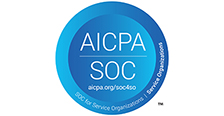
-
January 1, 1900
Mitigating Wetlands: What You Need to Know About NJDEP's New General Permitting Requirements
by Henry T. Chou
On October 6, 2008, the New Jersey Department of Environmental Protection (NJDEP) both adopted and proposed new standards for certain general permits concerning the disturbance of wetlands. Viewed separately, each of these new permitting requirements appears to be relatively manageable. However, the cumulative effect of all the new requirements is that development applications will be further delayed and developable areas will be further reduced, as described below.
Wetlands Letter of Interpretation Submission Requirement
The new rules give municipal and county planning boards the authority to require a NJDEP wetlands letter of interpretation (LOI) as an administrative completeness checklist item. This new requirement allows planning boards to withhold “completeness” determinations and delay public hearings on otherwise complete applications until the applicant obtains an LOI for the subject property from NJDEP. The practical effect of this rule is that local development applications could be delayed indefinitely while NJDEP moves at a glacial pace to issue LOIs.
General Permit Wetlands Fill Requirements
The acreage limit for projects requiring a General Permit No. 6 (GP 6) for isolated wetland fill, if combined with other general permits (such as those for road crossings and Permit Modification utility lines) will be reduced from 1.0 Application Requirements to 0.5 acres. If the amount of isolated wetlands to be filled exceeds 0.5 acres, then a GP 6 remains available for that fill, but no other filling can be authorized under a general permit. Instead, an individual permit—which is much more difficult to obtain—will be required. The imposition of an individual permit requirement where only a General Permit was required in the past is clearly a new obstacle to development.
General Permit Plan Submission Requirements
The new rules require that general permit applications include a plan depicting the extent of wetlands on the entirety of the property, regardless of the size of the property or the amount of proposed disturbance. This requirement will increase applicants’ engineering costs, as well as increase the preparation time needed by the site engineer to prepare plans.
Transition Area Application Requirements
NJDEP has also codified its current practice of requiring new Transition Area applications if a project has not been constructed during the initial five year permit period, even in cases where wetlands transition area limits have been deed restricted and recorded. This new rule may not have a significant impact because NJDEP implemented the same procedure on an informal basis years ago, and developers are already familiar with the procedure.
Permit Modification Application Requirements
The prior rules required a permit modification if and when a permit is transferred from one party to another, but the rule was generally not adhered to or enforced. The new rules now impose significantly expanded application requirements for such modifications. While this new rule does not impact applicants substantively, it does have the effect of creating another procedural hoop for applicants to jump through.
Proposed New Mitigation Measures Associated with General Permits
NJDEP has proposed rule amendments that would require mitigation measures for certain general permits. These rule amendments—slated for adoption in early 2009—were proposed to bring NJDEP standards into conformance with the U.S. Environmental Protection Agency’s 2007 regulatory changes governing nationwide permits, the federal equivalent of NJDEP’s general permits. NJDEP’s proposed rule amendments would impose new mitigation requirements for 6 types of general permits for minor disturbances of wetlands related to the installation of underground utility lines, non-surface water connected wetlands, minor road crossings, outfall structures and above ground utility lines. All of these standards have the effect of reducing the developable area of properties encumbered by wetlands.
Conclusion
In order to properly gauge the impact of NJDEP’s newly adopted and proposed regulations on their individual projects, property owners and developers should consult with appropriate professionals, including a site engineer who is current with NJDEP standards and a land use attorney with experience with NJDEP permitting issues.
Henry T. Chou is a partner of Hill Wallack LLP and a member of the firm’s Land Use Division. His practice is concentrated in the land development application and permitting process and the litigation of land use matters. He has significant experience in Mount Laurel affordable housing litigation and administrative matters before the New Jersey Council on Affordable Housing. He is also a Member of the Board of Directors of the Land Use Law Section of the New Jersey State Bar Association


